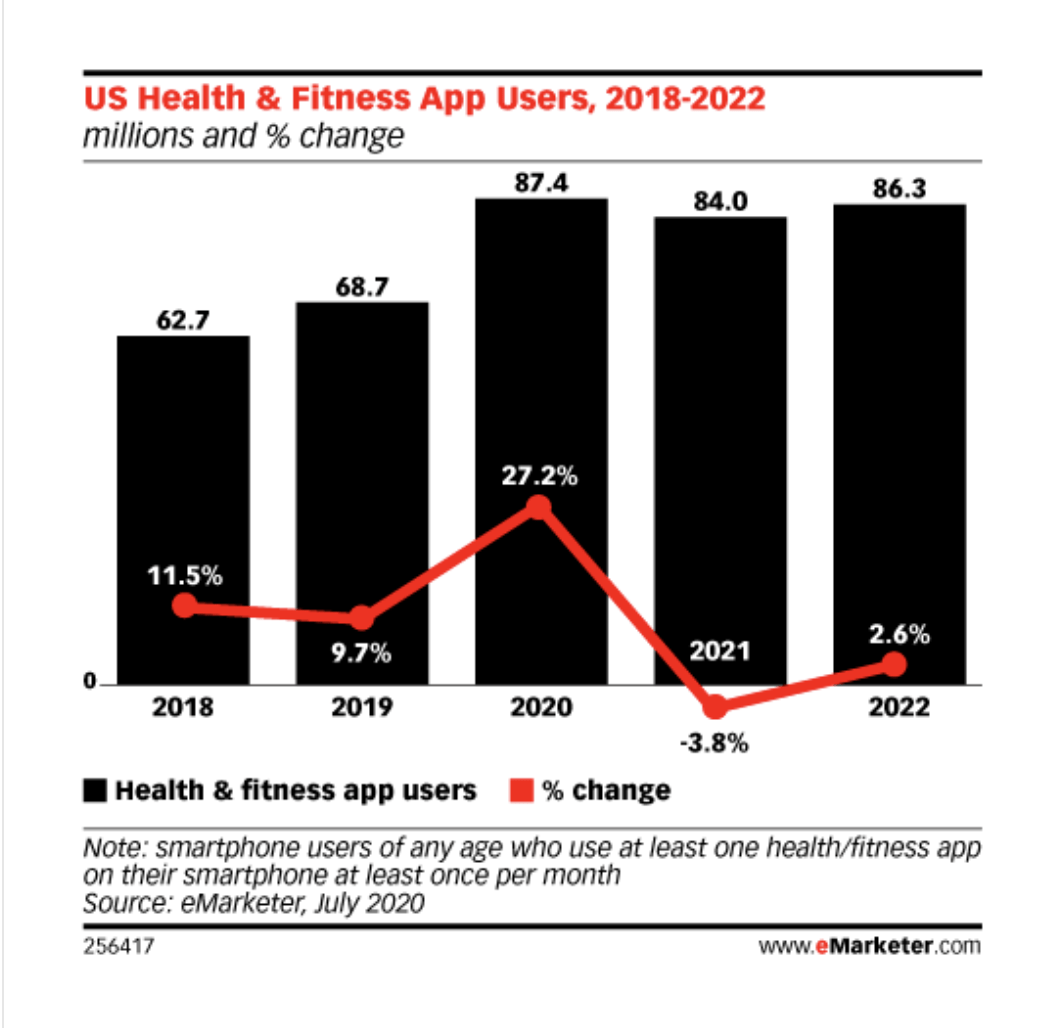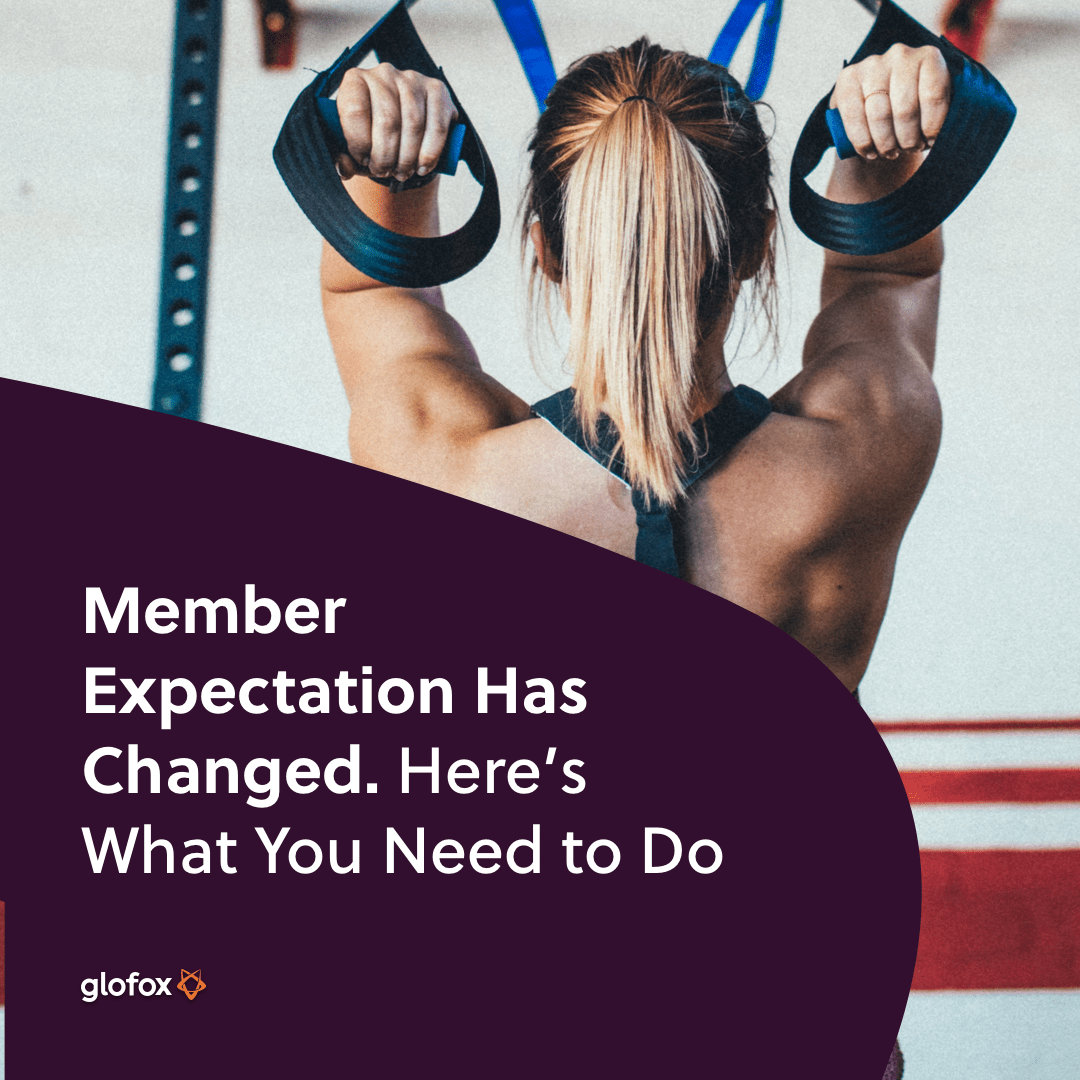Following a challenging year with the COVID-19 pandemic, wellness has been a hot topic. Now more than ever, there is an emphasis on both physical and mental wellbeing, and one way or another, 2020 has been the year that many people have embarked on a wellness journey like never before.
With limited socializing due to being confined at home for weeks at a time through 2020, many people have had extra time on their hands. And in a bid to look after their wellbeing, many have had to rely on technology for socializing, mindfulness, and staying active.
The pandemic continues to loom over the global wellness market, and fitness is no exception. But news of a vaccine brings hope for 2021, and exciting new trends are beginning to take shape in the wellness space.
This year, consumer mindsets have shifted, and trends have evolved at pace: there’s now a holistic view of incorporating wellness practices that benefit us physically and mentally. So as the new year draws closer, what trends can we expect to see, and how will they impact the fitness industry?
The changing member expectations and rapidly evolving technology of 2020 have paved the way for new trends. Here are 5 to look out for in 2021:
- Gym Goers Will Expect a Hybrid Offering
- Digital Fitness Will Continue to Evolve
- Consumers Will Incorporate More Wellness Apps Into Their Day-to-Day Lives
- Group Fitness Will Bounce Back Stronger Than Ever
- Health, Fitness, and Wellness Will Continue to Merge
5 Wellness Trends Set to Shape 2021
1. Gym Goers Will Expect a Hybrid Offering
While a vaccine rollout for 2021 looks promising, it will be a while before the world goes back to normal. Future lockdowns across various countries are as of yet unknown. Fitness businesses and members alike will likely continue turning to virtual fitness until gyms can open without restriction again. The light at the end of the tunnel is that at some point next year, businesses will open – and be able to stay open.
When this day comes, it’s true that many gym-goers will get back into their pre-pandemic routines, leaving online fitness behind them. But there will also be a significant amount of people who continue relying on virtual services to get their fitness fix. As gyms were forced to close their doors in mid-March, fitness business and their members quickly adapted to online fitness classes. During this time, media analytics Comscore found that the consumption of on-demand fitness videos increased 147% vs. the previous year. By June, YouTube reported that daily views with titles including “home workout” had risen by 515%.
These statistics reflect an uptake in digital fitness at a time when it was the only option: either work out at home or don’t work out at all. But the market segment has been growing for many years; the pandemic has simply accelerated this growth and with it consumer demand for digital offerings.
For fitness business owners in 2021 and beyond, a hybrid business model that offers both online and in-person services is essential for success – because members now expect it.
2. Digital Fitness Will Continue to Evolve
We know that gym members will expect to have digital options when it comes to fitness and wellness from now on. But to grow and succeed as a fitness business in the next decade, gyms will need to continuously improve their digital offering. As Stuart Brauer points out in this episode of The Fitness Founders Podcast, you need to evolve between day 1 and day 21.
Today’s consumers want a seamless experience, one that enables them to workout whenever and wherever they want. However, competition in the digital fitness space is fierce, and fitness businesses will have to stay a step ahead to stay relevant to members. Commenting recently on gaining a competitive edge in the fitness market over tech giants such as Apple, Les Mills Global Markets CEO Keith Burnet points out that consumers want a “one-stop-shop” for their fitness needs:
“Much like supermarkets, consumers want a one-stop-shop for their fitness needs, so clubs should offer a compelling blended solution that combines the motivation and social connection of live fitness experiences in-club, with the convenience of digital workouts at-home. Offering a connected fitness solution that neither Apple nor the best boutiques can match puts your club in a strong position to keep current members – and attract new ones – by supporting them to work-out however they choose.”
Keith Burnet, Les Mills
For gym owners, this means providing fully-integrated live and on-demand solutions that can take the member experience beyond its physical facility’s four walls.
3. Consumers Will Incorporate More Wellness Apps Into Their Day-to-Day Lives
Many people have turned to apps this year to help give their lives structure amid the pandemic. And whether it’s a 10-minute meditation on Headspace, a guided run on the Nike app, or tracking sleep with an app like Sleep Cycle, wellness app usage is set to increase. A recent report from E-Marketer predicted that the use of health and fitness apps would increase by approximately 27% this year at 87.4 million, up from 68.7 million in 2019.
The report implies that though this figure may drop slightly in 2021 as we enter post-lockdown life, it’s predicted that wellness app usage will stay above 84 million through 2022.
The Top 10 Barriers
Slowing Your Fitness
Business Growth
Discover more What’s most interesting is the areas of wellness that come out on top in terms of downloads. Unsurprisingly, as many were confined to their homes, fitness apps feature heavily on the top ten list of wellness apps in the first half of 2020. According to app insights company Apptopia, Video workout apps got 65% more downloads than non-video-based workout apps, with almost 40% more daily active users and generated 15% more revenue.
But topping the list in the number one spot is the popular mindfulness app, Calm. Headspace, a similar app, also features at number four, emphasizing the world’s changing view of wellness: people are approaching their physical and mental health with a more holistic approach. According to Apptopia, the top ten wellness apps in the US by downloads in 2020 were:
- Calm. 8.6 million downloads
- Fitbit. 4.8 million downloads
- MyFitnessPal. 3.9 million downloads
- Headspace. 3.8 million downloads
- Flo. 3.6 million downloads
- Muscle Booster Workout. 3.4 million downloads
- BetterMe. 3.2 million downloads
- Fitness Coach. 2.9 million downloads
- Samsung Health. 2.8 million downloads
- Home Workout – No Equipment. 2.7 million downloads
With consumers now familiar with and reliant upon a range of apps to look after their mental wellness, they are undoubtedly one of the biggest wellness trends to look out for in the future. Fitness businesses should leverage the opportunity to incorporate this tech into their gym or studio. Check out this blog post for 6 fitness apps that will improve your member experience right now.
4. Group Fitness Will Bounce Back Stronger Than Ever
Group fitness has been climbing in popularity for years. Spurred on by the boutique fitness boom, it’s an area now that big box gym chains and clubs are investing in too.
In a recent men’s health article exploring what the fitness industry will look like in 2030, Nerio Alessandri, president of Technogym, predicts, “There will be two types of clubs. Boutique studios based on a specific training experience, and full-service clubs offering a variety of amenities and programs with a social component.”
Les Mills CEO Clive Ormerod adds that while there’s a growing emphasis on virtual fitness, group classes deliver a physical interactive experience that can’t be wholly replaced:
“Digital is huge, but ultimately people crave relationships.”
Clive Ormerod, Les Mills
This is already apparent in the fitness industry, with examples from Obe and Mirror. These digital brands are developing innovative ways to connect their members virtually. Obe recently introduced its “workout party” feature, where users can invite up to seven friends to join them for a workout. Mirror also encourages users to “grab a friend and use the Mirror together, or train live with other members of the community. Work together and stay motivated!”
The growing popularity of community in group fitness, whether it’s bix box gyms or boutiques, is a strong indicator of the fitness industry’s future as a hub of social interaction. People want to work out with like-minded people; they want to feel a sense of community. And if fitness businesses can offer engaging, social experiences, they have the opportunity to become the backbone of communities in the coming decade.
5. Health, Fitness, and Wellness Will Continue to Merge
According to the Global Wellness Institute, the global wellness industry, including everything from gyms and studios to spas, nutrition, and personal training, is valued at a massive $4.5 trillion. And while “wellness” has always been a broad term, it encompasses everything that promotes mental and physical well-being. The significant shift in consumer wellness trends for 2021 has been largely led by the pandemic. It has transformed our industry, not just for this year, but forever.
As we’ve mentioned, people have a much more holistic view of what wellness now means to them, and a growing demand for group fitness as it was before the pandemic highlights that people crave community. In recent years, fitness has become about more than exercise alone: It’s a lifestyle choice, rather than a couple of hours a week you feel you have to commit to working out. This new view of fitness combines various aspects, including physical activity, nutrition, and emotional wellness.
More than ever, wellness incorporates a range of physical and mental components that people are practicing digitally and physically in their everyday lives. To leverage this shift, gyms and studios will need to provide high-quality services with a holistic approach to health, fitness, wellness, and everything in between.
In Summary
Technology and virtual fitness offerings are set to evolve, and a gym’s online member experience will be key to success. While we hope that the vaccine means 2021 will see many gyms and studios back to ‘business as usual,’ delivering a top class digital experience to engage members, stay relevant, and stand out from the crowd needs to be a priority for long-term success.
Offering a connected fitness experience that combines the best of online and in-person services is the goal to strive for in 2021 and beyond.

















